Mass customization is an emerging trend in the apparel industry that combines mass production techniques with customization. The article discusses how new technologies like body scanning, computer-aided design, and digital printing are enabling companies to offer customized clothing and footwear at lower costs. Three examples of companies implementing mass customization strategies are provided: Custom Foot, which customizes shoes; Levi Strauss, which offers customized jeans; and Second Skin Swimwear, which makes customized swimsuits. While mass customization offers benefits to consumers and companies, challenges remain around issues like body scanning technology, single-ply cutting, CAD system compatibility, and modifying patterns for individual customers. The manufacturing process and organizational structure may need to change to fully implement mass
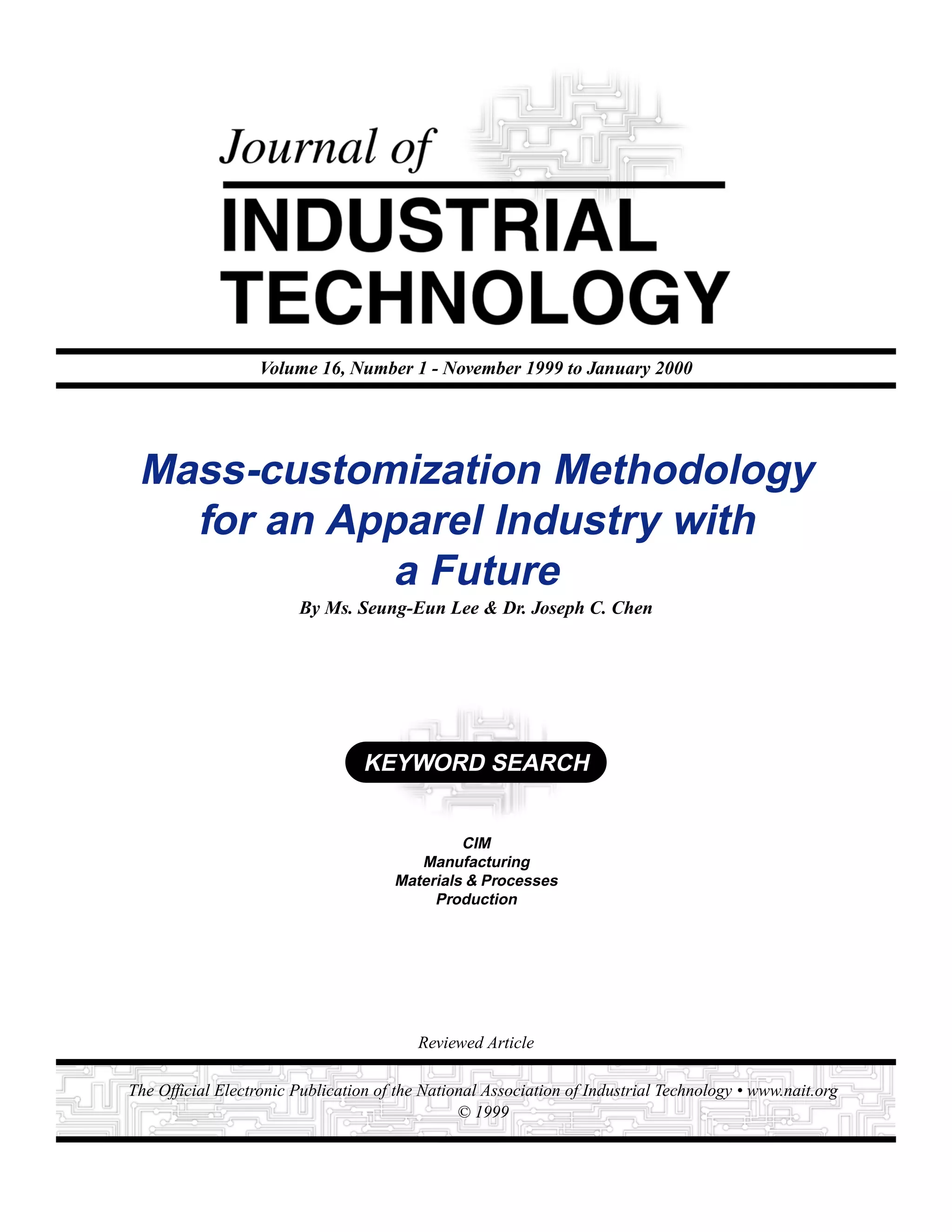
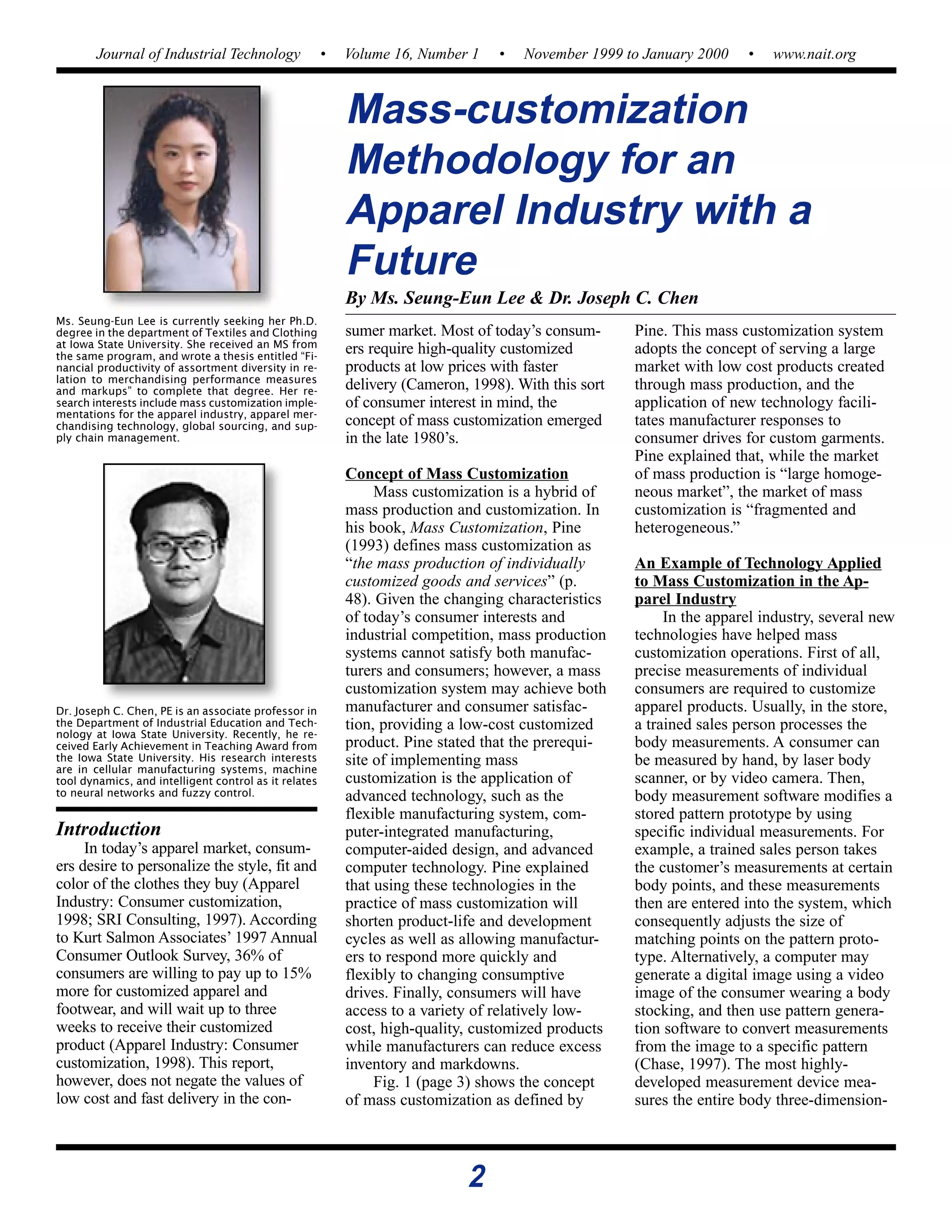
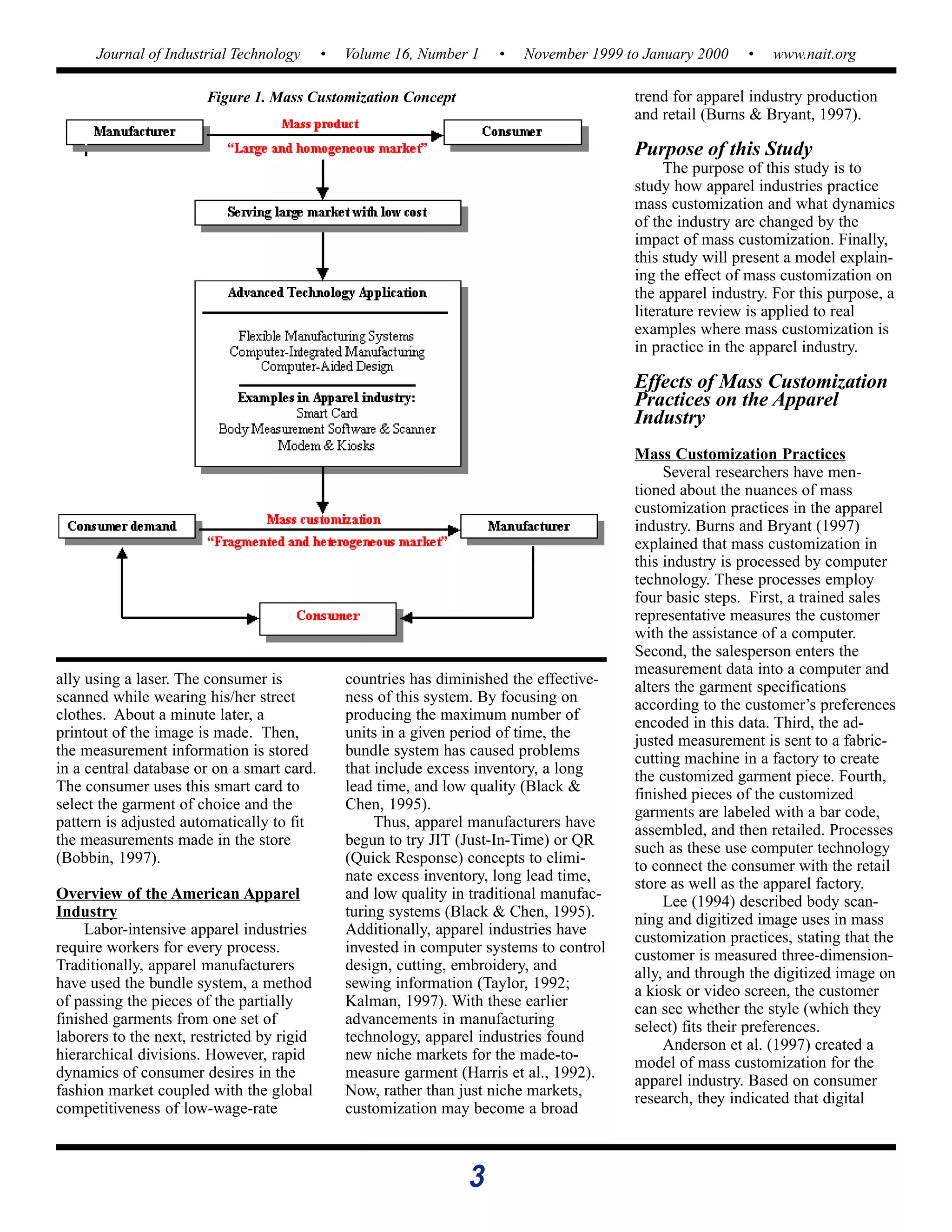
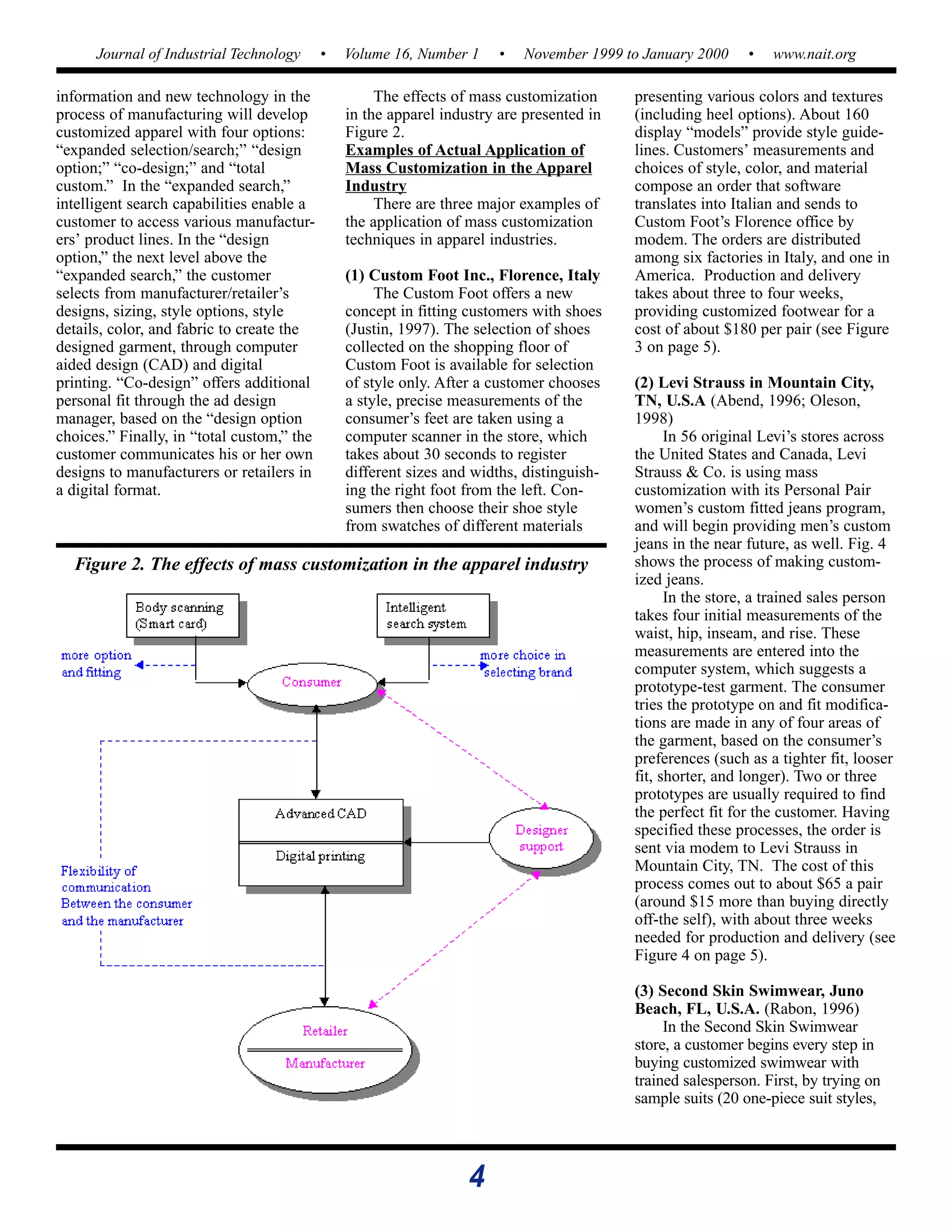
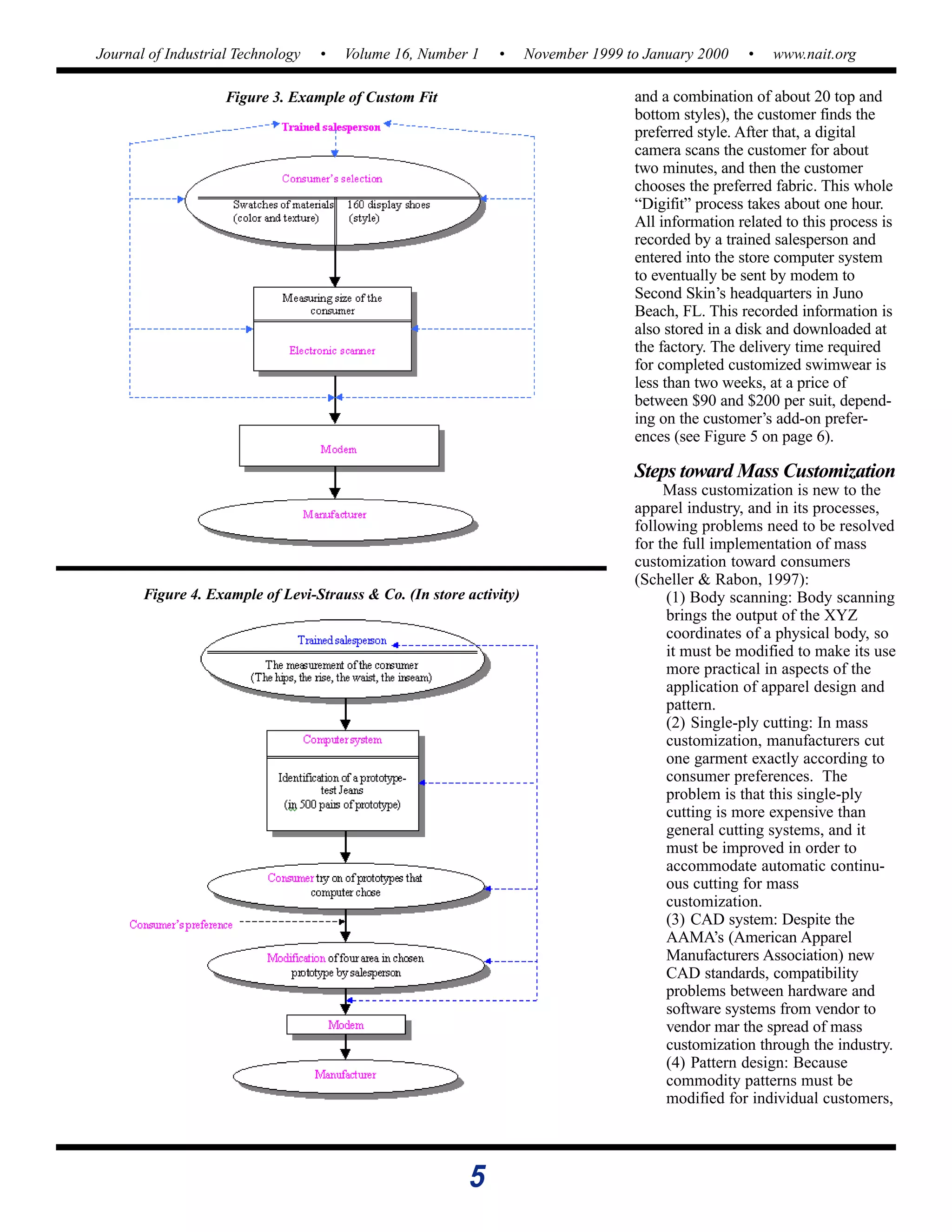
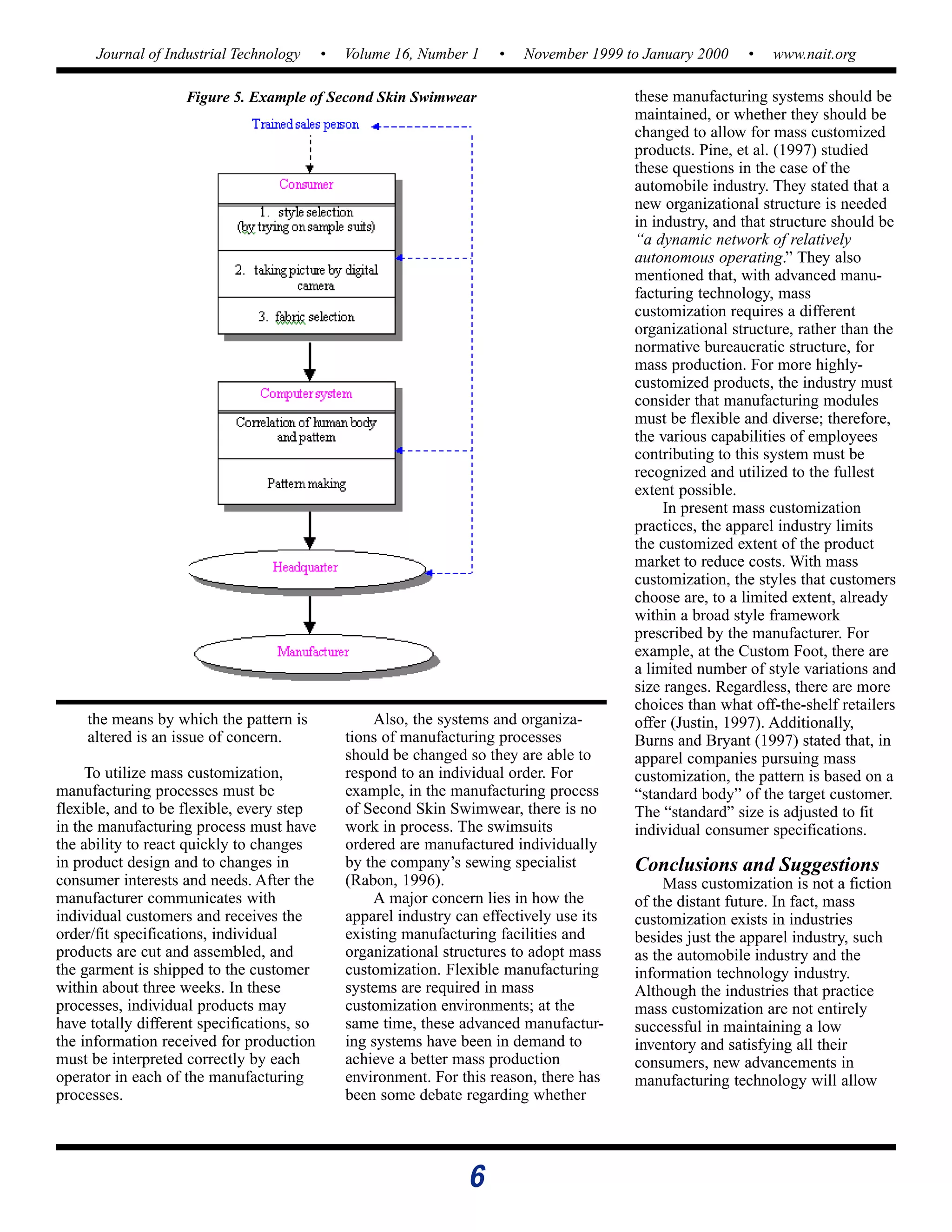
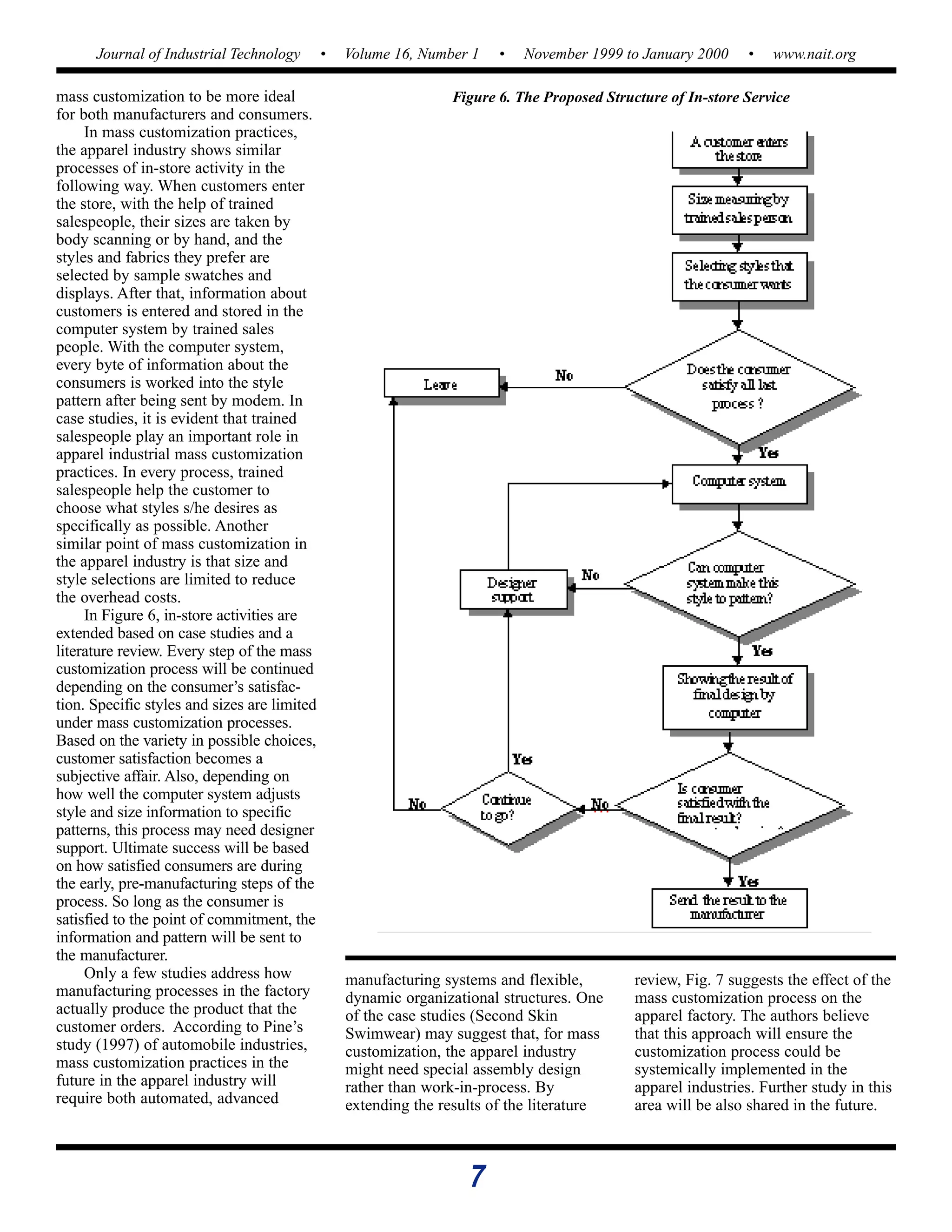
![8
Journal of Industrial Technology • Volume 16, Number 1 • November 1999 to January 2000 • www.nait.org
References
Abend, J. (1996, October). Custom-
made for the masses: Is it time yet?
Bobbin, 48-52.
Anderson, L. J., & Brannon, E. L.,
Ulrich, P. V., Marshall, T., &
Staples, N. J. (1997, August).
Discovering the process of mass
customization: A paradigm shift for
competitive manufacturing. Na-
tional Textile Center Research
Briefs.
Apparel industry: Consumer
customization. (1998). Retrieved
July 13, 1998 from the world wide
web: http://www.aimagazine.com/
archives/598/mastor9.html).
Black, J. T. & Chen, J. C. (1995). The
role of decouplers in JIT pull
apparel cells. International Journal
of Clothing and Technology, 7(1),
17-35.
[TC]2 to feature 3-D body scanning
(1997, September). Bobbin (P. 86).
Burns, L. D., & Bryant, N. O. (1997).
The business of fashion. New York:
Fairchild Publication.
Cameron, L. S. Mass customization:
Oxymoron or manufacturing
revolution? Retrieved May 22,
1998 from the world wide web:
http://www.manufacturing.net/
closeup/invent.htm
Chase, R. W. (1997). CAD for fashion
design. NJ: Prentice Hall.
The Custom foot offers a new concept
in fitting customers. Retrieved May
22, 1998 from the world wide web:
http://www.thecustomfoot.com/
fag.html.
Harris, M. S., Mehrman, M. I. &
Dougherty, J. P. (1992, March).
Made-to-measure: computing a
garment fit. Bobbin, 56-61.
Justin, M. (1997, November 10). Give
‘em exactly what they want.
Retrieved May 21, 1998 from the
world wide web: http://
www.pathfinder.com/fortune/1997/
971110/bes.html
Kalman, J. (1997, December). An
industry restructures. Bobbin, 12-
14.
Lee, L. (1994, September 20). Gar-
ment scanner could be a perfect fit.
Wall street Journal, pp. B1, B6.
Oleson, J. D. (1998). Pathways to
agility: Mass customization in
action. New York: John Wiley &
Sons, Inc.
Pine, B. J., II (1993). Mass
customization. Boston: Harvard
Business School Press.
Pine, B. J. II ., Victor, B., & Boynton,
A. Making mass customization
work. Retrieved May 22, 1998
from the world wide web: http://
www.unc.edu/~boynton/articles/
masscust.html.
Rabon, L. C. (1996, August). Custom
fit comes of age. Bobbin, 42-48.
Scheller, H., & Rabon, L. C. (1997,
November). Mass customization
affords product variety. Bobbin, 43-45.
Scheller, H., & Rabon, L. C. (1997).
Mass customization making pro-
cess. Retrieved May 21, 1998 from
the world wide web: http://
www.bobbin.com/media/97sept/
mc.htm
SRI Consulting. (1997). Mass
customization: Custom capability
in the era of the mass market.
Retrieved May 22 1998 from the
world wide web: http://
future.sri.com/BIP/datalog/didesc/
2005.html
Taylor, P. (1990). Computers in the
fashion industry. Oxford:
Heinemann Professional Publishing.
Figure 7. The proposed mass customization process on the apparel factory](https://image.slidesharecdn.com/leee12221jittt-130422121230-phpapp01/75/Lean-and-jit-in-textiles-industry-8-2048.jpg)